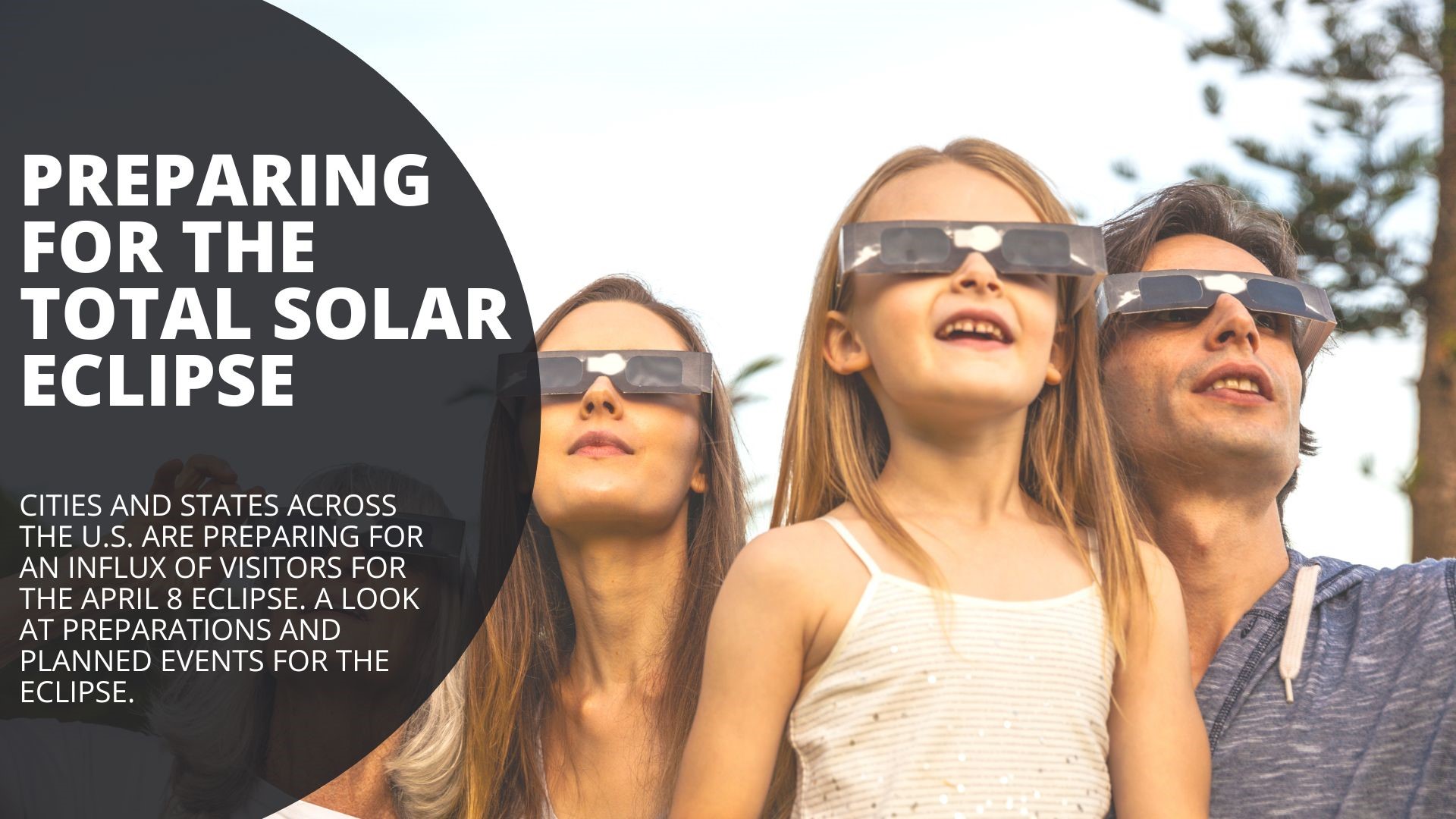WASHINGTON — On April 8, a large swath of North America will see day turn into night for as long as four-and-a-half minutes as a solar eclipse passes across the continent.
The eclipse will enter over Mexico's Pacific coast, move up through Texas and Oklahoma, crisscross the Midwest, Mid Atlantic and New England, before exiting over eastern Canada into the Atlantic.
If you're in its path, here's how to watch the eclipse.
Safety first
To safely view the eclipse, special protection for your eyes is imperative to prevent damage to your vision.
"It is not safe to look at the sun even with sunglasses," Jackie Faherty at the American Museum of Natural History told the Associated Press. "In order to look at the sun you need to ensure that whatever eyewear you have on or protective gear is blocking all of the dangerous radiation from you, the ones that your eye can't see or detect."
That means special eclipse glasses for the day of the eclipse. The only time it is safe to remove those glasses during the eclipse is during totality, when the sun is completely shrouded. Before and after, certified eclipse glasses are essential to avoid eye damage.
Be ready
"As soon as you're ready to start witnessing the eclipse, the glasses should go on. Get your eye actually used to watching the sun the way it will look," Faherty said. "Everything else will be dark around you. The sun will be the one thing that's very clear to you."
Cameras, binoculars and telescopes must be outfitted with special solar filters for safe viewing.
"The astronomical phenomenon of an eclipse is a known wonder of the human experience, as long as people have been attempting to watch an eclipse, they've also realized that they should probably protect themselves," Faherty said.
No glasses? There are other options
If you're not able to get your hands on eclipse glasses or need a last-minute solution, consider making a pinhole projector or shoebox viewer.
Where to find safe solar eclipse glasses
The American Astronomical Society Solar Eclipse Task Force vetted sellers and compiled a list of trusted manufacturers and suppliers of eclipse glasses here.
Grocery stores and office supply chains may carry eclipse glasses in your area.
When is the solar eclipse?
Entering the U.S. through Texas, the solar eclipse will begin its partial eclipse phase at around 12:20 pm in CDT in Dallas on Monday, April 8, according to NASA.
Totality is set to begin around 1:40 p.m. CDT until 1:44 p.m. CDT in Dallas, Texas, before completely ending at 3 p.m. CDT.
The eclipse will approach the east coast at around 1:59 p.m. EDT, in Cleveland, Ohio. Totality will begin at 3:13 p.m. and end at 3:17 p.m. EDT.
In Maine, the eclipse will begin at 2:22 p.m. EDT, with totality beginning at 3:32 p.m. EDT and ending at 3:34 p.m. EDT.
The eclipse will exit through Newfoundland, Canada at 5:16 p.m. NDT.
When the eclipse begins and how long it'll last depends on where you are in reference to the path of totality. For some, the eclipse could be as long as four minutes.
For more information on specific eclipse times in your city, check out Eclipse2024.org
The Associated Press contributed.

